Before being documented by a sanctioned body, a historic house commonly encounters several” historic.” Normally, the structure is at least a particular age, depending on the rules for the respective checklist.
An alternate aspect is that the structure is recognizably the same form as it historically reached.
The third is a demand that either an event of literal significance happed at the point, that a person of literal significance was associated with the point, or that the structure itself is important for its armature or innards.
Houses are decreasingly being defined as major in the United States to renew neighborhoods and increase the good health of girding civic areas.
Establishing a house as a major tends to increase the house’s value and others in the same vicinity.
This can affect the development of near parcels, creating a wave impact that spreads to girding environs.
In some circumstances, freights are levied on homeowners during the appointment procedure, so there isn’t inescapably a blessing to accomplishing so.
Restoration Grants for Historic Homes
The National Historic Preservation Act produces civil, state and actual governments to work with nonprofit organizations and the people to save literal slots.
However, structure or point, you can gain an allotment from the Major Preservation Fund to restore the property, If you’re interested in buying a historic home grant or if you have a place similar to a structure.
The National Park Service assists the account, liberating moneybags to allocate grants to candidates.
You can also seek private financing sources. There are several requirements to admit an allotment.
- Fulfil Eligibility Criteria
- Make an Application
- Demonstrate Matching Funds
- Additional Eligibility Requirements
1. Fulfill Eligibility Criteria
Belongings modify as literal if it’s associated with the energies of persons or events that are significant in history, represents uncommon features, maintain high artistic value or gain knowledge that’s important to history.
If the acreage meets these standards, the National Park Service recommends entering the National Register for Literal Places. Entrance into the Register is a preliminary requirement for public financing.
Suitable candidates for grant financing include state agencies, universities, and units of original governments like metropolises, municipalities, counties, and nonprofit associations.
Private homeowners, especially those looking into restoring old homes grants, typically seek restoration backing from other sources.
2. Make an Application
Belongings qualify as literal if it’s associated with the lives of someone or events that are important in history, displays uncommon features, maintain high artistic value or return from the knowledge that’s crucial to record.
If the parcel meets these standards, the National Park Service recommends entering the National Register for Literal Places. Entrance into the Register is a preliminary condition for available financing.
Qualified candidates for grant financing include state mechanisms, universities, and units of actual governments like metropolises, municipalities, counties, and nonprofit organizations.
Personal, literal property owners generally seek restoration backing from other sources.
3. Demonstrate Matching Funds
Grants commonly accept a bone-to-bone cash contest from the candidate. To admit favourable consideration for the allotment, you’ll need to indicate that you have the matching 50 per cent of the total design cost for the restoration from other sources similar to your particular coffers, grants from foundations or fundraising conditioning.
4. Additional Eligibility Requirements
The body issuing the allocation may bear you to meet new eligibility criteria according to its purposes.
For representative, you may demand to open up your belongings to the people for several days or create unrestricted educational goals as a condition for joining the distribution.
The budget is also generally subject to the essential restoration work completing the Secretary of the Interior’s Norms for the Treatment of Historic Parcels.
Other requirements for the allotment may possess subsequent employment laws and icing assortment during the rehabilitation design.
Relate Article: $99 Dentures in a Day near Me
Grants for Historic Remodelling Homes
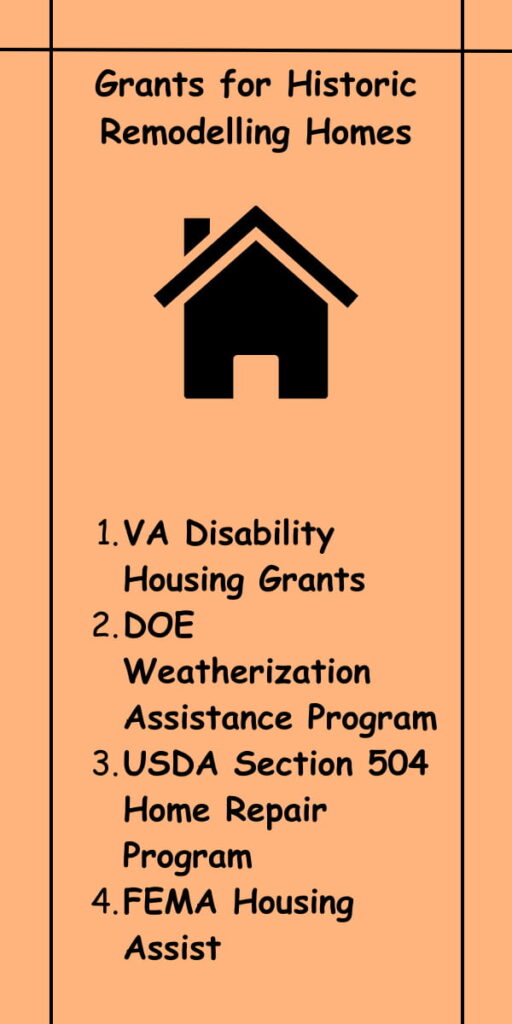
One result of the force deficit is buying a fixer-upper at a more reasonable price and conducting the demanded repairs and modernizations yourself.
The Rehab Mortgage Insurance schedule protects customers from depending on enhancement loans with high- interest rates and short reimbursement times.
While FHA Section 203 (k) loans have several conditions and approaches, they authorize homebuyers to link the original investment of the home and the necessary transformations into a single long-term loan, which can either be at a fixed or shapeable interest rate.
Part of the loan activities toward delivering the seller, while the remaining is placed into an escrow account and removed to the buyer as modifications are satisfied.
For getting, the real recovery cost must be at least $ 5000 to be equipped but can encase up to a full rebuild as long as the most earlier foundation remains in place.
- VA Disability Housing Grants
- DOE Weatherization Assistance Program
- USDA Section 504 Home Repair Program
- FEMA Housing assist
VA Disability Housing Grants
Imagine you’re a stager with a service-related disability that demands precise casing configurations. In that case, you may privilege for either the Especially Acclimated Casing (SAH) grant or the Special Home Adaptation (SHA) funding.
Which funding you are prepared for will trust on the soul of your disability. Nevertheless, the finances can be used previously or dropped into as substantial as six individual deals throughout your endurance, If you’re granted one of these grants.
You could admit up to$ to support the neutralized network cost or change a house suited to your great necessities with a SAH allotment.
The SHA allotment has an outside of $ to purchase or remodel a continuous hearthstone. These subventions are also available to stagers who need to patch a momentary hearthstone but with a lower highest quota quantity.
DOE Weatherization Assistance Program
USING DOE FINANCES, the U.S. Department of Energy weatherizes houses as a space for low-income houses.
To complete, you must be at or below 200 of the destitution income guidelines, and prerogative is given to seniors, families with insufficient members, and homes with children.
The Weatherization Assistance Program (WAP) concentrates on whole-house weatherization, beginning with a significant inspection to determine where improvements should be made.
These advances preserve homes approximately $ 283 per time while addressing implicit healthiness and safety industries.
USDA Section 504 Home Repair Program
Live in a convenient place, and your family’s income is 50 below the median revenue. You may authorize for either a loan or allowance through the USDA to conduct necessary home repairs.
Grants must be used to heal healthiness and protection corporations, whereas a shape loan can also facilitate or contemporize the home and residencies.
USDA loans can be repaid over a 20- course and stand appointed at a one interest rate. Grant candidates must be 62 or older and unskillful to reimburse a circumstances loan.
The Section 504 program’s outside loan portion is $, and the highest percentage amount is $ 7500; still, the loan and allotment can be combined for an aggregate of$ as long as the contributor is suitable to send back a piece of the loan.
FEMA Housing Assist
The Federal Emergency Management Agency proposes assistance to those affected by presidentially- declared extremities, similar to natural catastrophes.
These benefits run from childcare to medical- expenditure payment and possess case support for those whose residences are harmed.
The Individualities and Homes Program offer rent service to people who find momentary diggings due to unlivable circumstances and residence for short hostel dwells.
FEMA also has finances unrestricted for home rehabilitation that aren’t shielded by insurance, which can contain returning a ruined home.
Relate Article: Churches That Help the Homeless
Grants for Historic Building Preservation

The Historic Preservation Fund supports various neighborhoods across the United States via grants for specialized service and capability systems in state governments, actual governments, and ethnic governments.
We instantly support schemes sustaining major locations in communities in further than 200 honored lines, all 50 countries, the District of Columbia, the homes, the 3 Freely Associated States, and different attributes.
Our work helps major lots and establishment grounded identity, important factors to our neighborhoods’ social and promising energy.
Historic Preservation Fund (HPF) Grants are one-to-one matching grants for architectural or archaeological examination or results or pre-development techniques.
Grants range between $ and$. Suitable belongings must be registered in the National Register of Historic Places, and appropriate candidates are limited to state agencies, county governments, outward governments, educational establishments, and individual, nonprofit institutions as determined by the Internal Revenue Service.
The origin of the finances is the Federal HPF, and procedures are generally available in the late rest.
All HPF Grants are governed by the rules and limitations in the National Park Service Historic Preservation Fund Grant Manual (PDF)
- Certified Local Government (CLG) Grants
- History of Equal Rights Grant Program (HER)
- African American Civil Rights Grant Program (AACR)
- Maritime Heritage Grants The Grants Program
- Save America’s Treasures (SAT) Grants
- Tax Credits
1. Certified Local Government (CLG) Grants
- Certified Original Government (CLG) Grants CLG grants are too subsidized by the Federal HPF and have numerous necessities as the HPF grants with two important differences eligible prospects are altered to the CLG empowered residents in Maine, and a 40 match is needed rather than a 50 match. Procedures are typically unrestricted in January.
- New Century Community Grants As state schedule finances are available; the Commission creates matching grants to suitable nonprofit and community dropped institutions to restore or preserve historic parcels listed in the Register.
2. History of Equal Rights Grant Program (HER)
- History of Equal Rights Grant Program (HER) The HER Grant Program will save areas connected to achieving equal rights in America.
- HER Grants are issued by the National Park Service and will fund a wide spectrum of preservation techniques for major spots. They’re rewarded competitively and don’t bear an anon-Federal match.
3. African American Civil Rights Grant Program (AACR)
- The African American Civil Rights Grant Program (AACR) intention validate, diagnose, and preserve places telling the whole gossip of the long struggle for African American civil rights.
- The National Park Service administers the entitlement program and resolves fund a broad range of preservation techniques, including inspection and workforce, National Register nominations, oral histories and additional.
4. Maritime Heritage Grants The Grants Program
- Maritime Heritage Grants The Grants Program is distributed by the National Maritime Heritage Program (NMHP) of the National Park Service in cooperation with the Maritime Administration (MarAd).
- It supplies financing for education and preservation systems devised to hold major ocean coffers and improve public mindfulness and appreciation for the maritime heritage of the United States. All grants vested must be matched on a 1-to-1 foundation with non-Federal standards.
5. Save America’s Treasures (SAT) Grants
- Save America’s Treasures (SAT) Grants SAT grants deliver preservation and conservation support to nationally significant major parcels and supplies. Grants are awarded competitively and bear a bone-for-bone, non-Federal match.
- The subject belongings must be a National Historic Landmark or documented in the Register at the public position of effectiveness.
6. Tax Credits
- The Federal Historic Rehabilitation Tax Credit is a 20 civil income charge credit for recovering significant income-producing structures.
- It inspires secret inventors to save primary parcels and frequently closes a fiscal void required to create strategies attributes.
Relate Article: Free Roof Replacement for Seniors
Historic Preservation Fund Grant Programs
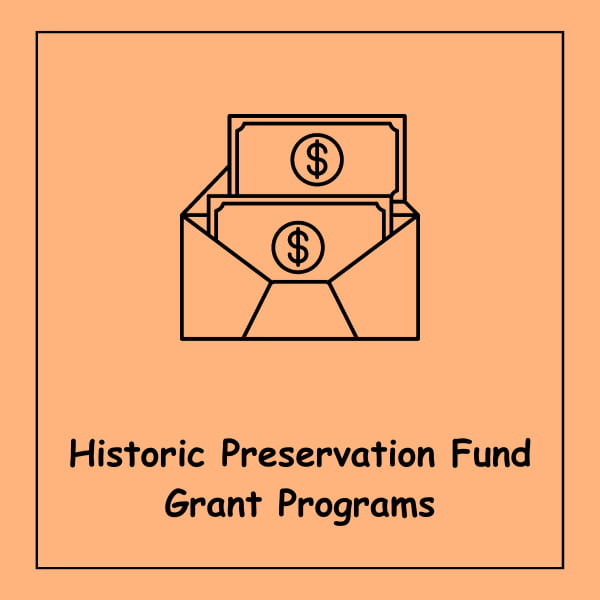
- State Major Preservation Office grants
- Ethnical Major Preservation Office grants
- African American Civil Rights Grants
- Disaster Recovery Grants
- Historically Black Colleges & Universities (HBCUs) Grants
- History of Equal Rights Grants
- Paul Bruhn Major Revivification Grants Program
- Save America’s Treasures Grants
- Ethnical Heritage Grants
- Underrepresented Community Grants
Grants to Renovate Historic Buildings
- Preserving and restoring old buildings can be public-spirited, advantageous or both. When a building’s a century or two old, it’s a detail of community history, something worth keeping rather than demolishing.
- Quality old buildings have also been refurbished into attractive, trendy office facilities or residence rooms, the National Trust for Historic Preservation says. Renovation isn’t cheap, but you may be able to use historic restoration grants and other funding sources.
- Most government and numerous secret historic restoration grants go to belongings confessed by governments or nonprofits. If you don’t conform to the bill, there are other allocation options.
Grant Requirements for Renovate Historic Buildings
Ownership is fundamental as far as finding historic rehabilitation assistance.
North Carolina’s Department of Natural and Cultural Resources declares if you possess the belongings as an individual or a for-profit business, overlook applying to state or federal governments.
Those grants go to facilities possessed by either governments or nonprofit organizations. If you operate a nonprofit, you may have a shot. The National Trust follows the identical rule.
Whatever your project, the grantor discretion presumably choose you to have some skin in the competition.
The National Trust requires a one-to-one match: for a $1,000 grant, you’d have $1,000 in matching funds. In North Carolina, you have to grow 40 per cent of the total project cost.
There are other conditions too. The National Trust, for illustration, must assignments to satisfy the national Department of the Interior’s standards for historic preservation.
Historic home restoration grants
The National Historic Preservation Act delivers approaches for civil, state and authentic governments to work with nonprofit associations and the people to save literal places.
Nevertheless, structure or point, you can gain an allotment from the Major Preservation Fund to repair the belongings, If you want a literal place comparable to a structure.
The National Park Service administers the account, terminating moneybags and issuing candidates’ grants. You can also pursue personal financing references. There are several conditions to receive an assignment.
Following are the historic home restoration grants
- Fulfil Eligibility Criteria
- Make an Application
- Demonstrate Matching Funds
- Additional Eligibility Requirements
Grant for Historic Building Restoration
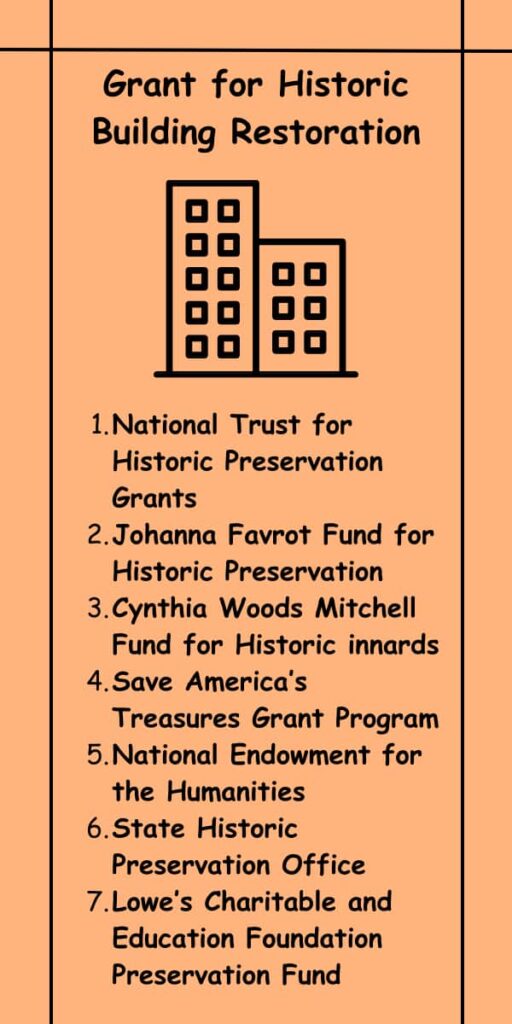
Following are the grant’s for historic building restoration
- National Trust for Historic Preservation Grants
- Johanna Favrot Fund for Historic Preservation
- Cynthia Woods Mitchell Fund for Historic innards
- Save America’s Treasures Grant Program
- National Endowment for the Humanities
- State Historic Preservation Office
- Lowe’s Charitable and Education Foundation Preservation Fund
National Trust for Historic Preservation Grants
- The National Trust Preservation Fund (NTP) proposes two grants to maintain historical designs. These grants maintain nonprofit organizations and public instruments and aren’t unrestricted to uniqueness.
- The first type of funding supplies matching finances from$ 500 up to$. The moneybags may be used for preservation planning and education. The alternate grant is for the preservation of extremities and to stabilize property in peril of immediate deterioration.
Johanna Favrot Fund for Historic Preservation
- The Johanna Favrot Fund for Historical Preservation grants nonprofit organizations and public agencies techniques that preserve a prominent place or ” regain an authentic sense of place”.
- Systems include structural rehabilitation as well as educational programs for the general public. Grants range from$ to$. Individualities and for-profit associations are suitable for financing if the belongings stand connected as a National Historic Landmark. The National Trust for Historic Preservation administers the allotment program.
Cynthia Woods Mitchell Fund for Historic innards
- The Cynthia Woods Mitchell Fund for Historic Innards suggests grants from $ to$ for ” the conservation, restoration and performance of primary innards”.
- It holds the form of interior features and acquiring authentic furnishings. Similar to the Johanna Favrot Fund, uniqueness and for-profit organizations are suitable if the belongings are a National Historic Landmark. The National Trust also assists this program for Historic Preservation.
Save America’s Treasures Grant Program
- The Save America’s Treasures Grant Program is a multiagency schedule that awards competitive grants to civil, state, original and ethnical mechanisms to maintain and conserve historically meaningful fields, similar to houses or establishments associated with American literal numbers ( chairpersons of influential authors, for representative).
- The grants deliver interconnected finances from the aspirant, and the highest funding awarded is$. The National Park Service allocates the funding program.
National Endowment for the Humanities
- The National Endowment for the Humanities (NEH) delivers several additional grants for significant preservation and conservation systems. Grant amounts range from$ further than$ 1 million.
- Allotment finances may be used to organize preservation systems or educational programming at historical installations and schedule objects and supplies for production in historic structures.
State Historic Preservation Office
- The State and Ethnical Historic Preservation Office in eachU.S. state acquires allotment funding from the Historic Preservation Fund, which is also awarded to original aspirants for the major preservation and conservation of parcels.
- Donors use these finances to repair and maintain parcels with the original value. Each state administers its program. For procedures and information, communicate with the major preservation office in your state.
Lowe’s Charitable and Education Foundation Preservation Fund
- In collaboration with the National Trust for Major Preservation, Lowe’s Charitable and Education Foundation Preservation Fund, the charitable arm of Lowe’s Home Improvement stores, delivers grants for the rehabilitation and preservation of meaningful literal parcels.
- The most contemporary program honours up to$ to restore major general institute structures, particularly those describing African American heritage.
Relate Article: Dental Grants in Georgia
Grants for Buying Historic Homes
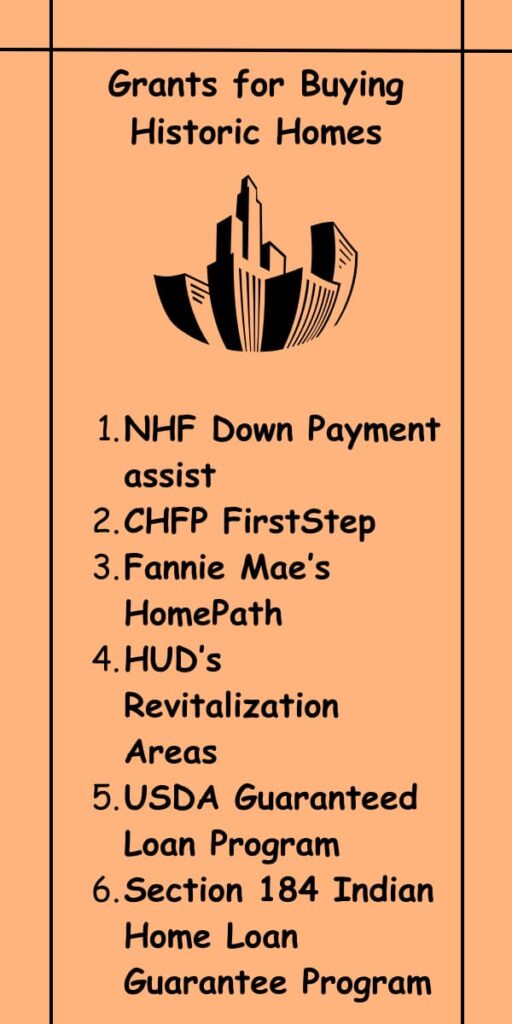
- NHF Down Payment assist
- CHFP FirstStep
- Fannie Mae’s HomePath
- HUD’s Revitalization Areas
- USDA Guaranteed Loan Program
- Section 184 Indian Home Loan Guarantee Program
NHF Down Payment assist
The National Homebuyers Fund’s (NHF) Down Payment Assistance Program supports those struggling to save sufficiently for a down payment.
The NHF provides eligible homebuyers with over 5 of their mortgage to help cover the down payment and ending costs.
- The program also makes vittles for homeowners who need assistance refinancing their mortgage.
- DPA arrives in the form of either a blessing or a 0- interest replacement mortgage that’s dismissed after three periods, so you won’t want to apply for this program if you’re planning to drive again momentarily. You don’t claim to be a first-time homebuyer involved in this program, and it’s available for low- and middle-income homebuyers. You’ll possess to function with an NHF sharing lender to prepare.
CHFP FirstStep
Since we work in Colorado Springs, we enjoy visiting a great program for buyers examining homes for trade-in Colorado Springs.
Colorado residers can also involve in FirstStep via the Colorado Housing and Finance Authority.
- FirstStep proffers first-time homebuyers and suitable stagers a 30- time fixed-rate mortgage.
- Upon acceptance for the loan, borrowers can involve in 4 down-payment services in a zero-interest alternate mortgage with no yearly payments. The alternate mortgage must be reimbursed in rich upon trade or refinance. Borrowers must complete a homebuyer education course and contribute at$ 1000 of their finances.
Fannie Mae’s HomePath
- Fannie Mae’s HomePath Ready Buyer program and Fannie Mae HomePath course offer a comprehensive educational approach for first-time homebuyers.
- Upon fulfilling the course, which qualifies you for endurable home- power, consumers are qualified for over three ending costs to oblige. Concluding cost assist is only unrestricted for HomePath parcels retained by Fannie Mae.
HUD’s Revitalization Areas
- Revitalization Areas are HUD-selected locales intended to boost homeownership under the National Housing Act. Homes within a Revitalization Area are suitable for particular agendas that give extremely blinked transaction prices to customers.
- Under the Asset Control Areas (ACA) program, foreclosed residences and delivered to FHA power are shown to ACA actors at acutely flashed rates. Properties rated at$ or lower can be bought for$ 100; parcels rated between$ and$ are flashed by$, and all other parcels are offered to actors for 50 of the appraisal value.
- The HUD even supports the Good Neighbour’s Next Door exchanges program within Revitalization Areas, which markets qualified parcels to preceptors, EMTs, firefighters, and law enforcement officers at 50 of the actual expense.
USDA Guaranteed Loan Program
- In complement to their home form loan, the USDA offers an ensured loan program that permits low-to middle- income home buyers to buy, make, or rectify a home with 100 financing within suitable provinces.
- The program delivers a 90 loan guarantee to authorized lenders, drawing the danger from the lender and thus securing the demand for a down-payment.
Section 184 Indian Home Loan Guarantee Program
- Section 184 is specially developed to promote home- power and credentials to capital among American Indian and Alaskan Native neighbourhoods. The schedule permits qualified borrowers to get into homes for a low down- payment by assuring that the lender will be repaid in full in the event of a foreclosure.
- Under Section 184, borrowers can guarantee a loan under$ with a1.25 down- payment. Loans over $ bear a 2.25 down- payment. The loan can be applied to buying, structuring, or revising a home on or off ethnic lands.
Relate Article: Salvation Army Free Furniture Voucher
Old House Restoration Grants
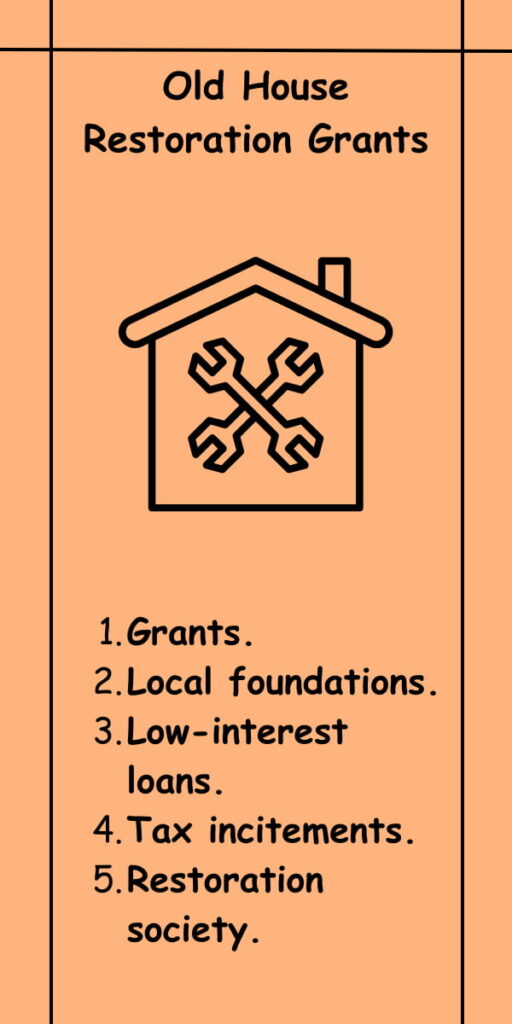
That beautiful old house might have stood for hundreds of times, but time has ultimately created to bring a chance.
But old house restoration can be a pricey bid. Fortunately, fiscal support for homeowners is general through multiple schedules designed to keep roots alive and nicely.
Do not despond over that ultra-tight allocation. Disburse some time accomplishing your schoolwork instead. When peeking for fiscal support, you must restore your home to its authentic beauty; some good places are to start.
Following are the old house restoration grants
- Grants.
- Local foundations.
- Low-interest loans.
- Tax incitements.
- Restoration society.
1. Grants.
When examining financing opportunities for restoration, always scrutinize grants first. Grants don’t have to be reimbursed, which can be a huge support for any homeowner.
However, general and personal grants normally go to acreages that will be used for the interest of the general libraries or primary office structures. Grants for the rehabilitation of personal homes are irregular.
2. Local Foundations.
A local foundation might be ready to show you an allotment or low-interest loan for your restoration procedure, specifically if your old house is in a” worried “neighborhood or a major quarter that has reached a strategy for your townlet.
In some locations, the earliest foundations have been accountable for revitalizing entire city provinces, so it is no way to look into what your area has to suggest.
3. Low-interest Loans.
If you can not locate grants, low-interest loans might support. Nevertheless, and the restoration work attaches to the examples set along by the government, you could be qualified for low-interest loans that protect at the narrowest part of your rehabilitation plans if your home is specified as a major possession or is on the National Register of Major Places.
4. Tax Incitements
In some nations, real estate levies can be arrested several times while working on the restoration.
Other countries deliver an income duty recognition that means lower levies paid. Nevertheless, you strength equipped for the Rehabilitation Tax Credit, If your major possessions produce income.
5. Restoration Society.
Authentic and state societies might suggest circling loan finances for those operating on major parcels or other grants and stimulants to bounce into that old house rehabilitation. Speak to your authentic banks about rehabilitation organizations in your location.
Relate Article: Churches That Help with Motel Vouchers for Homeless People
How to Pay for Major Home Alterations

There’s a lot of captivation in purchasing and selecting an out-of-date house, like an early 20th Century Puritanical or a 19th Century Tudor.
Nevertheless, there’s also a fortune of work and moneybags interested, particularly when modifying a home that’s been set as a’ major’ piece of real estate.
Fortunately, you may be suitable to take advantage of major home restoration grants, loans, and duty impulses.
Some are additional light to find and prepare for than others, but you should link with special coffers that could preserve you thousands if you do your schoolwork.
Historic Home Addition Costs
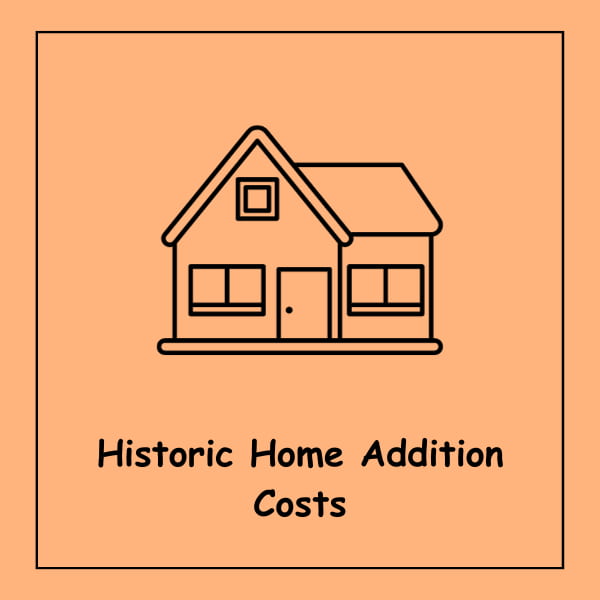
Primary homes can have a lot of importance. They stand as a surviving relic of once artificer, architectural techniques, quaint accoutrements, no extended mass presentation.
An old house cherished for other causes is comparable to being the home of an infamous person or pinpointing a significant circumstance decades ago.
They are again copping, and remodelling homes specified as principal can be much more precious than what you would pay for a typical home.
To assist offset these costs, you may permit grants, loans, and duty credits that could assist you to cover the home purchase and, if critical, the cost of repairing your unique home.
Relate Article: How to Get Low-Income Apartment Without Waiting List 2023
Historic Home Grants

Unfortunately, maximum grants for major homes are only open to nonprofit organizations and public parcels/ companies.
But as a private proprietor of a major home, you may be suitable to find allotment moneybags on an original, state, or public position from colourful sources, including humanitarian groups.
Original, state and city governments all have their brand of entitlement programs,” says Jon Wiest, proprietor of Ripped Jeans Construction.
In my city of Sunup, Illinois, for illustration, the megacity runs an allotment program for homeowners in its major sections to ease the surfaces of their homes – similar as repointing mortar, replacing siding, and oil.
These grants vary from$ to$,” Wiest resumes. ” There’s a competitive process and acceptance process, and homeowners must introduce a clear compass of the work concerned as well as several competitive flings to be suitable.”
To pursue grants in your province, start by requesting additional data from a nearby headquarters of the National Trust for Major Preservation or your State Major Preservation Office.
Also, visit this Preservation Directory.com point for links to several allotment programs.
Grant eligibility conditions will vary extensively depending on the program, including how, where, and when the finances can be used.
Historic Home Renovation Loans

Of course, grants aren’t the only funding authority available to significant home buyers. You can also follow a renovation loan that will support you restore the belongings and creating them comfortable.
One of the multiple favoured choices is an FHA 203k recovery loan. This mortgage schedule, supported by the civil government, packets your preliminary mortgage and renovation expenses into one loan.
The interest rate can be specified or shapeable, your down payment can be as common as 3.5, and you generally require a credit score of about 620.
The walkout to FHA’s 203k program is that customers must spend mortgage insurance. Still, the same goes for utmost mortgages with a down payment below 20 per cent.
Consumers who put down 20 or more distant might choose Fannie Mae’s Homestyle.
Renovation loan or Freddie Mac’s CHOICE Renovation.
These traditional loans are similar to the 203k program; they allow you to rush the acquisition price and modifications into a single loan.
Nonetheless, they only return private mortgage insurance (PMI) until your equity achieves 20 of your home’s worth, and you can sidestep PMI completely if you put 20 down.
Another possibility is a Title 1 loan backed by the Department of Housing and Urban Development (HUD), which permits you to embrace a simple sum of $ for small repairs or over to$ outside.
Relate Article: Free Government Iphone 7
Home Equity Funding Options

If you appreciate a preliminary hearthstone and are copping the significant house as an investment or alternate home, you might have other loan choices.
You may want to think about thumping into your current house’s equity and using those united finances to help pay for your principal home’s refurbishment.
- A cash–eschewal refinance of your primary hearthstone
- A home equity loan
- A home equity line of credit
Alternately, you could explore a relaxed particular loan that doesn’t handle using your primary hearthstone as collateral.
Particular loans can be attained much more snappily than other loan types.
While the interest rate can be fixed or variable, the rate is continually much developed than home equity support. The more useful your credit score, the better your chance of obtaining a lower rate.
Conclusion of Restoration Grants for Historic Homes
The National Historic Preservation Act provides guidelines for civil, state and original governments to work with nonprofit associations and the public to save literal places.
The National Park Service helps the fund, removing moneybags to giving grants to candidates. You can also pursue personal financing authorities.
Most Searching Posts:
- Free Cleaning Supplies for Low-Income Families
- Free Greyhound Bus Tickets for Homeless
- Free Government Iphone 6 Plus
- Free Government Iphone 8 Plus
- Free Government iPhone XS
- Free Iphone 11 Government Phone
- Free Government Iphone 12
- Free Government Iphone 13
- Free Government iPhone 14
Frequently Asked Questions (FAQ)
Des Moines Home Improvement Grants
Therefore, it’s always best to check with local authorities or organizations to get the most up-to-date information for Des Moines, Iowa.
In the United States, there are various federal, state, and local programs that offer grants or financial assistance for home improvements. These programs aim to support homeowners in making necessary repairs, increasing energy efficiency, or making their homes more accessible.
Here are some general sources of home improvement grants in the USA:
- U.S. Department of Housing and Urban Development (HUD): HUD offers several grant programs, such as the Community Development Block Grant (CDBG) and HOME Investment Partnerships Program, which provide funding to local governments and nonprofit organizations. These entities may offer assistance to homeowners for home repairs and renovations.
- State and Local Government Programs: Many states and local municipalities have their own grant programs to help homeowners with home improvements. These programs can vary widely, so it’s important to research the specific programs available in Des Moines or Iowa.
- Nonprofit Organizations: Some nonprofit organizations, such as Habitat for Humanity, offer assistance to low-income homeowners for repairs and renovations. These organizations may have specific eligibility criteria and application processes.
- Energy Efficiency Programs: Energy companies or utility providers often have programs to promote energy efficiency in homes. These programs may offer grants, rebates, or low-interest loans for energy-efficient upgrades, such as insulation, windows, or HVAC systems.
To find information about home improvement grants in Des Moines, Iowa, you can take the following steps:
- Contact the Des Moines City Government: Reach out to the local government offices, such as the housing or community development department, to inquire about any available grants or assistance programs for homeowners.
- Visit the Iowa Housing Finance Authority (IHFA) website: IHFA is the state agency that provides information and resources related to housing in Iowa. They may have information about state-level grants or loan programs for home improvements.
- Research Local Nonprofit Organizations: Look for local nonprofit organizations in Des Moines that focus on housing or community development. These organizations may offer grants or assistance programs for homeowners.
- Consult with Energy Providers: Contact local energy companies or utility providers to inquire about energy efficiency programs that provide grants or financial incentives for home improvements.
Historic Homes Renovation
Renovating historic homes in the United States can be a rewarding but challenging endeavor. Historic homes are valued for their architectural significance, historical relevance, and cultural heritage. If you are interested in renovating a historic home, here are some key considerations:
- Preservation Guidelines: Historic homes are often subject to preservation guidelines and regulations at the local, state, or federal level. These guidelines aim to protect the historic character and integrity of the property. Before starting any renovations, research and understand the specific preservation regulations that apply to your home.
- Historic Designations: Some historic homes are officially designated as landmarks or listed on the National Register of Historic Places. These designations provide recognition and protection for the property. However, they may also come with additional restrictions on renovations and alterations. Consult with local historic preservation offices to understand the implications of any designations on your renovation plans.
- Research and Planning: Thorough research is essential when renovating a historic home. Understand the architectural style, historical context, and original materials used in the construction. This knowledge will help guide your renovation decisions and ensure that the changes align with the home’s historic significance.
- Preservation Specialists: Consider working with professionals who specialize in historic preservation. Architects, contractors, and craftsmen experienced in working with historic properties can provide valuable expertise and ensure that the renovation adheres to preservation guidelines.
- Funding and Tax Incentives: Renovating historic homes can be costly. However, there are potential funding sources and tax incentives available. Some state and local governments offer grants, low-interest loans, or tax credits for the rehabilitation of historic properties. Research these opportunities and consult with local historic preservation offices for information on financial assistance.
- Conservation and Sustainable Practices: When renovating a historic home, it’s important to balance preservation with energy efficiency and sustainability. Explore conservation practices and consider incorporating energy-efficient upgrades that respect the historic character of the property.
- Community Engagement: Engage with the local community and preservation organizations throughout the renovation process. They can provide guidance, support, and resources. Building positive relationships can also foster a sense of community and shared responsibility for historic preservation.
Tax Benefits of Owning a Historic Home
A historic property may qualify for a tax freeze, tax abatement or tax credits from federal, state, county or local government — sometimes outright and other times applied against approved renovations
Grants for Refurbishing Old Buildings
In the United States, there are various grants and financial incentives available for refurbishing old buildings, particularly those with historical or architectural significance. These programs aim to support the preservation and revitalization of historic structures. Here are some notable grant programs:
- National Park Service (NPS) Grants.
- National Trust for Historic Preservation Grants.
- State Historic Preservation Offices (SHPO) Grants.
- Community Development Block Grants (CDBG).
- Economic Development Administration (EDA) Grants.
- Foundations and Nonprofit Organizations.
- Tax Incentives.
Historic Home Restoration near Me
To find historic home restoration resources near your location in the United States, you can follow these steps:
- Local Historic Preservation Offices: Start by contacting your local historic preservation office or department. They can provide valuable information on resources, grants, and incentives specific to your area. Search online for the name of your city or county along with terms like “historic preservation” or “historic landmarks commission” to find the appropriate local office.
- State Historic Preservation Offices: Each state in the U.S. has a State Historic Preservation Office (SHPO). These offices oversee historic preservation efforts and can provide information on restoration resources, grants, and tax incentives available at the state level. Visit the website of your state’s SHPO or search online for the name of your state along with “state historic preservation office” to find the relevant contact information.
- National Trust for Historic Preservation: The National Trust for Historic Preservation is a nonprofit organization dedicated to preserving historic places in the United States. Their website offers resources and information on historic preservation, including a directory of preservation organizations and resources by state. Visit their website at www.savingplaces.org to access their resources and search for preservation organizations near you.
- Local Preservation Organizations: Many cities and regions have local preservation organizations or historical societies that focus on preserving and restoring historic properties. These organizations often provide resources, guidance, and support for individuals interested in restoring historic homes. Search online for the name of your city or region along with terms like “historic preservation organization” or “historical society” to find local organizations near you.
- Networking and Local Events: Attend local events, workshops, or seminars focused on historic preservation and restoration. These events provide an opportunity to connect with preservation professionals, contractors, and other individuals who share an interest in historic homes. Networking with like-minded individuals can help you discover local resources and expertise.
- Online Research: Conduct online research to find restoration professionals, contractors, and suppliers specializing in historic home restoration near your location. Websites like the National Park Service’s Technical Preservation Services (www.nps.gov/tps) and the Traditional Building Directory (www.traditionalbuilding.com) can help you find qualified professionals.
Loans for Historic Homes
When it comes to financing historic homes in the United States, there are several options available, including loans specifically designed for historic properties. Here are some common types of loans you can consider for financing a historic home:
- Conventional Mortgages.
- FHA 203(k) Rehabilitation Loan.
- Historic Rehabilitation Tax Credits.
- State and Local Historic Preservation Loans.
- Energy-Efficient Financing Programs.
- Personal Loans or Home Equity Loans.
Vintage Home Restoration
Restoring vintage homes in the USA is a labor of love for many homeowners and preservation enthusiasts. If you’re interested in restoring a vintage home, here are some key considerations to keep in mind:
- Research the Home’s History.
- Preservation Guidelines and Regulations.
- Plan and Budget.
- Engage Professionals.
- Historic Materials and Details.
- Energy Efficiency and Modern Upgrades.
- Permitting and Inspections.
- Community Engagement.




